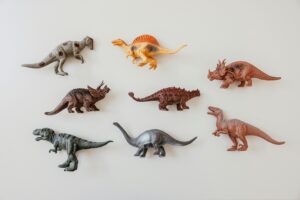
When our daughter turned 18, her birthday wish was quite unexpected.
She wanted to keep a garden lizard as her first personal pet.
Her unexpected desire to have a garden lizard as a personal pet was borne when we visited a reptile store a few weeks before her 18th birthday.
She was captivated by a vibrant oriental garden lizard named Snowy.
Snowy had a shimmering scale that was fascinating to watch, especially when climbing and leaping on branches.
Snowy was very fast, clean, agile, smart, shy, and energizing and this was everything our daughter wanted in her first personal pet.
At first, we were hesitant to grant her such a birthday wish cause of the thought of reptiles roaming the house but we eventually gave in.
We had to teach her everything she needed to know about keeping a garden lizard as a pet, with these practical steps below.
Garden Lizard as a Pet:
Garden Lizards scientifically known as “Calotes vesicular” are fascinating, low-maintenance animals that can make a great pet, especially for first-time pet owners, teenagers, and busy individuals.
They are of different species of garden lizards such as the common garden skink or anole, etc. To know more, read here.
They are generally small creatures with each species having tailored self-care requirements and handling specifications.
They are usually shy and are receptive to gentle petting and handling.
Garden lizards do not exhibit any known form of aggression which makes them safe for kids and general households as pets.
How To Keep A Garden Lizard As A Pet:
Adopting a garden lizard as a pet, especially for first-time pet owners or teenagers can be a rewarding and thrilling experience if done with some understanding and knowledge of their natural self.
To responsibly keep a garden lizard, you have to mimic their natural habitat.
You also have to know the specific species of garden lizard as well as make an adoption from a reputable breeder with a good breeding history.
It is important, that your new pet is ethically sourced so as not to fall prey to adopting a captured lizard from the wild.
Shelter Set Up:
The Habitat setup should mimic their natural habitat as much as possible.
A terrarium fitting the size of your new pet garden lizard filled with natural substrates that are not harmful when ingested.
Non-harmful substrates such as coconut fiber or pure sand should be used.
The enclosure should have tree branches for climbing and a water dish. The tree branches also serve as a false cover to avoid predators.
It should also comprise a reliable heat source such as a heat lamp or bulb. This is needed for optimal body temperature regulation.
The heating and light source is also needed to synthesize vitamin D3 which is vital for calcium absorption in garden lizards.
The light source and duration just like their shelter should mimic their natural environment (12-hour day/ night cycle).
When this is provided to meet their ideal specification, watch how your new garden pet lizard explores the new home just like my 18-year-old daughter’s pet.
Nutrition:
A domesticated pet should not be made to hunt for food or water.
Your new garden lizard should be provided with a diet that contains all the available nutrients needed for optimum general well-being.
They are insect-loving animals that feed on edible insects such as Crickets, Mealworms, Waxworms, Silkworms, Super worms, Hon worms, etc.
They can also live on vegetables and fruits with added supplements that contain calcium and other needed vitamins.
Always provide clean and fresh water or moist leaves where they can absorb water.
Health And Hygiene:
A clean and hygienic enclosure is vital for your new pet’s general well-being.
Their enclosure should be free from dirt, uneaten meals, and faces daily.
Their water should be changed regularly at least twice daily with clean and fresh water.
The food and water bowls of your new pet lizard should be cleaned weekly to prevent the build-up of bacteria, mold, and unpleasant odors.
You should always ensure regular visits with a vet who is experienced with reptiles.
Always ensure to check for health signs such as loss of appetite, change in color of urine and feces, body temperature, and behavior.
Handling:
Lizards do not like rough or hard touch. Always endeavor to touch them gently or avoid a touch as much as you can.
When handling your new pet garden lizard, be attentive to signs of stress or discomfort.
Always wash your hands before and after handling to avoid direct contamination.
Conclusion:
In a world dominated by conventional pets, the unexpected birthday wish of a garden pet lizard our daughter opened us to whole new possibilities.
She learned how to show unconditional care, affection, and protection for her new pet.
Her new pet gave us a further glimpse into the world of nature, proving that sometimes, the most unexpected pets can add the most value to our lives.


Awesome content. Welldone
thank you.
With this, I already feel like getting a garden lizard as a pet
we are glad you found value and we are available to help in every step of the way if you eventually adopt a garden lizard as a pet.